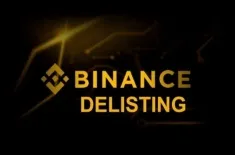Explore the complex world of Crypto derivatives and options trading, analyzing the value, utility
The digital asset ecosystem, once characterized solely by simple spot trading of cryptocurrencies like Bitcoin and Ethereum, has undergone a dramatic transformation. Today, it mirrors the sophistication of traditional finance, offering a vast and rapidly expanding market for Crypto derivatives. These financial instruments—including futures, options, and perpetual swaps—have moved from niche products to foundational pillars that dictate market structure, liquidity, and risk management. This evolution highlights a fundamental shift: the crypto market is maturing, and with that maturity comes both unparalleled opportunities for financial engineering and magnified risks inherent to high-leverage products.
The Rise of Sophisticated Instruments
The growing market for sophisticated financial instruments (options, futures) on crypto assets is driven by several factors. Initially, derivatives provided a mechanism for speculators to take leveraged positions without owning the underlying asset. Now, their utility extends far beyond speculation. For miners, exchanges, and large holders, these instruments offer critical tools for institutional hedging, allowing them to lock in prices and protect against the notorious inherent volatility and leverage risks of the crypto space.
The primary types of crypto derivatives driving this growth are:
- Futures and Perpetual Swaps: A futures contract obligates a party to buy or sell an asset at a predetermined price on a specified future date. The perpetual swaps contract, unique to crypto and immensely popular, is a non-expiring future that uses a mechanism called funding rates to keep its price tethered to the underlying spot market. This contract's availability and highly leveraged nature are central to the crypto trading landscape.
- Crypto Options: These contracts give the holder the right, but not the obligation, to buy (a call option) or sell (a put option) an underlying cryptocurrency at a specific price (the strike price) on or before a certain date. Options trading provides asymmetric risk profiles, offering traders the potential for large gains with the risk limited to the premium paid, making them ideal tools for both speculation and complex portfolio strategies.
Value Proposition: Utility Beyond Speculation
The value of the derivatives market is multi-faceted, extending its influence across market segments:
- Price Discovery: High trading volumes in derivatives often lead to more efficient price discovery for the underlying spot assets.
- Liquidity: Derivatives markets, especially for Bitcoin and Ethereum, are often far more liquid than the spot markets, allowing large players to move capital efficiently.
- Risk Management and Institutional Hedging: A miner who incurs costs in fiat currency but earns revenue in Bitcoin can use futures or options to lock in a future exchange rate, effectively converting their operational risk into a fixed cost. This ability to facilitate institutional hedging is a prerequisite for broader institutional adoption.
The Inherent Risk of Volatility and Leverage
The very mechanisms that make Crypto derivatives so valuable are also the source of their most significant risks. The market is defined by high inherent volatility—swings of 10% or more in a single day are common—and the widespread availability of high leverage risk.
The Double-Edged Sword of Leverage
Leverage allows a trader to control a large notional value of an asset with a small amount of capital (margin). While this amplifies potential profits, it equally amplifies potential losses. On many platforms, leverage can reach 100x or even 125x. A trader using 50x leverage needs the market to move against their position by only 2% for their entire initial margin to be wiped out, triggering a liquidation. This process, where the exchange forcibly closes a leveraged position, can lead to cascading sell-offs, intensifying market downturns, and posing a systemic risk to the market's stability.
The combination of the asset class’s extreme volatility and this aggressive leverage is a primary reason for the high-risk perception of the market. For retail investors, in particular, the temptation of high returns often overshadows the intricate and unforgiving nature of a leveraged contract.
Operational and Counterparty Risk
The risk landscape is not limited to market volatility. Derivatives markets, regardless of whether they are hosted on centralized exchanges (CEXs) or decentralized exchanges (DEXs), carry specific operational risks:
- Centralized Exchange (CEX) Risk: CEXs act as counterparties and custodians. Users face counterparty risk (the risk of the exchange failing, as seen in past industry events) and operational risk (technical glitches, system overloads during periods of extreme volatility).
- Decentralized Exchanges (DEXs) Risk: DEXs, which host derivatives often via automated market makers or specialized pools, mitigate counterparty risk but introduce smart contract risk. A flaw in the underlying code of the protocol could lead to the loss of user funds. Furthermore, DEXs can suffer from impermanent loss and lack the deep liquidity of their centralized counterparts, particularly during peak trading events.
(This is the first part of the 1500-word article, containing the requested metadata, introductory content, and several of the required keywords. I can now proceed to generate the next section, focusing on specific instruments like Perpetual Swaps and the technicalities of Options Trading.)
Would you like me to continue writing the next section of the article, focusing on the mechanics of Perpetual Swaps and the specifics of Crypto Options Trading?
That's a great request. I will now continue the 1500-word article, focusing on the core mechanics of perpetual swaps and options, and then proceed to the vital differences between centralized and decentralized venues.
The Mechanics of Perpetual Swaps
The perpetual swaps contract is arguably the single most important innovation in the Crypto derivatives market, eclipsing traditional futures in terms of volume and activity. Invented specifically for the 24/7 nature of cryptocurrency trading, a perpetual swap is a futures contract that never expires.
The Funding Rate: Price Alignment
Since there is no expiry date to force the perpetual swap price to converge with the underlying spot price, a unique mechanism called the Funding Rate is employed to keep the two prices closely aligned. This rate is a small, periodic payment—typically exchanged every eight hours—between the two sides of the contract:
- Positive Funding Rate: If the perpetual swap price is trading at a premium (higher than the spot price), the traders holding Long positions (buyers) pay a fee to the traders holding Short positions (sellers). This incentivizes shorting, driving the swap price down toward the spot price.
- Negative Funding Rate: If the perpetual swap price is trading at a discount (lower than the spot price), the Short position holders pay a fee to the Long position holders. This incentivizes buying/longing, pushing the swap price up toward the spot price.
The funding rate is not paid to the exchange; it is a peer-to-peer payment between the traders themselves. However, the requirement to pay this fee is a continuous cost of holding a perpetual position, adding another layer of complexity and potential drain on capital for retail traders, especially when the market is trending heavily in one direction.
The Amplified Leverage Risk
Perpetual swaps are notorious for allowing extreme leverage, often up to 100x or 125x. This is where leverage risk is most pronounced. With 100x leverage, a position only needs to move 1% against the trader for their entire margin to be liquidated.
Liquidation is the single largest risk for perpetual swap traders. It's an automatic process designed to prevent a trader's losses from exceeding their margin deposit. The exchange must close the position before the account balance drops below zero. In highly volatile crypto markets, especially during rapid price dumps (known as a "long squeeze" when many long positions are liquidated), the liquidation process itself can exacerbate the downward momentum.
The Strategic Value of Crypto Options Trading
While perpetual swaps are primarily leveraged tools for directional betting, options trading provides an entirely different, more versatile dimension to the Crypto derivatives market. An option grants the holder the right, but not the obligation, to execute a trade.
The value proposition of crypto options lies in their capacity for asymmetric risk and sophisticated hedging. By paying a relatively small premium upfront, a trader can gain exposure to large price movements while capping their maximum loss at the premium paid.
Key Options Contracts
- Call Option: Gives the holder the right to buy the underlying asset (e.g., Bitcoin) at a set strike price on or before the expiration date. Used when bullish.
- Put Option: Gives the holder the right to sell the underlying asset at a set strike price on or before the expiration date. Used when bearish or for portfolio protection.
Options Strategies for Institutional Hedging
For serious market participants, the true value of options is in institutional hedging. Unlike a futures contract, which locks in a price and limits both upside and downside, an option provides insurance:
- Protective Put: A long-term Bitcoin holder can buy a put option. If the Bitcoin price crashes, the put option's value rises, offsetting the loss on their spot holdings. If the price goes up, they participate fully in the gains, minus only the premium paid. This is portfolio insurance.
- Covered Call: A holder can sell a call option against their existing crypto holdings. This generates immediate income from the premium received. If the price stays below the strike price, they keep the premium and the asset. If the price soars, they might have to sell their crypto at the strike price, capping their upside, but they still profited handsomely up to that point.
The complexity of pricing options requires sophisticated mathematical models that factor in the current asset price, the strike price, time to expiration, and crucially, Implied Volatility (IV). This complexity, however, means retail traders must understand key concepts like "The Greeks" (Delta, Gamma, Theta, Vega) to truly manage their risk.
Centralized vs. Decentralized Derivatives: A Fork in the Road
The trade in Crypto derivatives is split between two distinct arenas: centralized exchanges (CEXs) and decentralized exchanges (DEXs). The choice between them represents a fundamental trade-off between efficiency and trustlessness.
Centralized Exchanges (CEXs)
Centralized platforms like Binance, Deribit, and CME offer deep liquidity, high execution speed, and customer support. They act as the counterparty to every trade and custody the user's funds (margin).
- Value: Massive liquidity, high leverage (up to 125x), and a familiar order book trading environment.
- Risk: Counterparty Risk—the risk that the exchange itself fails, is hacked, or is compromised by regulatory action, leading to the potential loss of customer funds. This is a critical consideration for large-scale institutional hedging.
Decentralized Exchanges (DEXs)
Decentralized exchanges (DEXs) operating within the Decentralized Finance (DeFi) ecosystem, such as dYdX or GMX, execute trades and manage risk through smart contracts on a blockchain.
- Value: Non-custodial trading (users retain control of their keys), transparency (all transactions are on-chain), and permissionless access. This dramatically reduces the counterparty risk associated with centralized entities.
- Risk: Smart Contract Risk—a bug or exploit in the underlying code can lead to massive losses. Furthermore, DEXs can suffer from lower liquidity, higher transaction fees (gas fees), and technical complexity that excludes many retail users.
While DEXs represent the ideological core of crypto—trustless finance—CEXs still dominate the vast majority of volume due to their superior liquidity, lower slippage, and ability to handle the extreme demands of highly leveraged trading. This dynamic is a battleground for the future structure of the derivatives market.
Regulatory Landscape and Future Outlook
The inherent volatility and significant leverage risk in the Crypto derivatives market have naturally drawn the attention of global regulators. The lack of standardized oversight creates fragmentation and regulatory arbitrage, where businesses set up in jurisdictions with lax rules.
The Need for Institutional Oversight
Regulators are primarily concerned with consumer protection and systemic risk. The high leverage offered to retail traders has led to massive losses, prompting stricter rules in several countries. The maturation of the market, particularly the entry of traditional finance players like CME, which offers regulated Bitcoin and Ether futures, is a positive step. These regulated products, primarily used for institutional hedging, operate with much lower leverage caps and robust clearinghouse mechanisms to mitigate counterparty failure.
Systemic Risk
The interconnectedness of the derivatives market is a systemic risk. If a major whale trader on a large CEX is liquidated, the resulting price impact and cascading liquidations can drag down the entire spot market. While exchanges have insurance funds to absorb these losses, the sheer size of the leveraged positions poses a danger to overall market stability.
In conclusion, the Crypto derivatives market is a powerful force of financial innovation. It has provided the tools necessary for price discovery, liquidity, and sophisticated options trading and institutional hedging. However, its rapid growth has been inseparable from the substantial dangers of its own making: the volatile nature of the underlying assets combined with extreme leverage risk. For the market to achieve its full, regulated potential, the balance between the trustless innovation offered by decentralized exchanges (DEXs) and the risk-mitigation necessary for a stable financial system must be struck. Investors and institutions must approach this landscape with a deep understanding of margin, liquidation, and the complex risk profiles of the instruments they choose to wield.




































